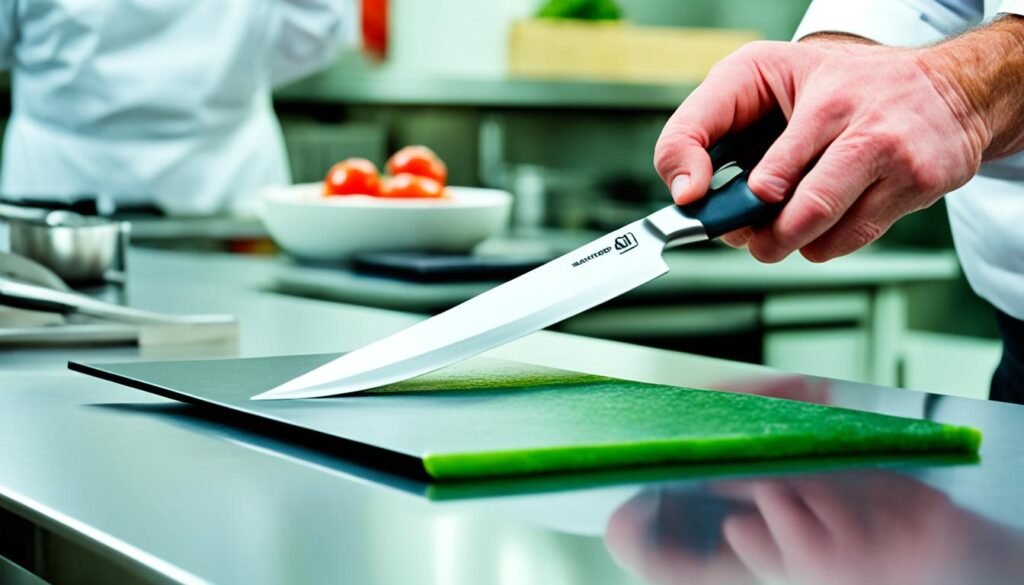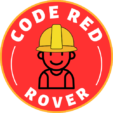Kitchen safety is of utmost importance to ensure a hazard-free cooking experience. By knowing what are the 5 basic rules of kitchen safety, you can prevent accidents and maintain a safe cooking environment.
These rules are derived from multiple sources, including industry experts, culinary professionals, and government guidelines. Implementing these rules will help you protect yourself and others while enjoying the culinary process.
What are the 5 Basic Rules of Kitchen Safety
- Always keep your kitchen clean and maintain proper sanitation practices.
- Handle knives and sharp objects with caution to avoid injuries.
- Practice fire safety measures to prevent kitchen fires.
- Follow proper electrical safety guidelines to avoid shocks and fires.
- Prevent cross-contamination by keeping raw and cooked foods separate and practicing proper food storage.
Rule 1: Cleanliness and Sanitation
In the world of cooking, cleanliness and sanitation are paramount when it comes to ensuring safe cooking practices and adhering to kitchen safety regulations. Implementing essential kitchen safety rules, such as maintaining a clean and sanitary kitchen environment, is crucial for preventing the spread of harmful bacteria and pathogens. By following these practices, you can create a safe space for food preparation and handling.
Regularly cleaning and disinfecting countertops, utensils, and appliances is a fundamental aspect of maintaining kitchen cleanliness. This helps to eliminate any potential sources of contamination and reduces the risk of foodborne illnesses. Remember to pay special attention to cutting boards, which can harbor bacteria if not cleaned properly.
Proper hand hygiene is another essential component of kitchen safety. Before handling food, always wash your hands thoroughly with warm, soapy water for at least 20 seconds. This simple step can significantly reduce the transfer of harmful microorganisms from your hands to the food you are preparing.
Creating a safe cooking environment also involves implementing safe storage practices. Make sure to store food items at the appropriate temperatures, as per food safety guidelines, to prevent the growth of harmful bacteria. Additionally, regularly inspect and clean refrigerators and freezers to maintain optimal conditions for food storage.
Remember, a clean and sanitary kitchen is the foundation of safe cooking practices. By prioritizing cleanliness and following essential kitchen safety rules, you can ensure the health and well-being of yourself and those you cook for.
Rule 2: Proper Handling of Knives and Sharp Objects
When it comes to kitchen safety, one area that requires utmost attention is the proper handling of knives and other sharp objects. By following these guidelines, you can minimize the risk of cuts and injuries while working in the kitchen.
1. Use knives correctly
When using a knife, always ensure that your fingers are protected. Hold the knife with a secure grip, keeping your fingers curled inward and away from the blade. This technique helps to prevent accidental cuts and allows for better control while cutting ingredients.
2. Maintain proper cutting technique
Using proper cutting techniques can significantly reduce the risk of accidents. Always cut away from your body, keeping your fingers clear of the knife’s path. Use a cutting board with a non-slip surface to prevent slips and ensure stability during chopping and slicing.
3. Store knives safely
Proper storage of knives is essential to prevent accidents. Keep knives in a designated knife block or use blade guards to protect both the blade and yourself from accidental cuts. Avoid storing knives loosely in drawers where they can be easily accessed by children or mishandled.
By implementing these safety measures, you can ensure that your experience in the kitchen remains a safe and enjoyable one.

| Tip | Benefit |
|---|---|
| Hold the knife with a secure grip | Minimizes the risk of accidental cuts and provides better control |
| Cut away from the body | Reduces the likelihood of self-inflicted injuries |
| Use a non-slip cutting board | Prevents slips and enhances stability during chopping and slicing |
| Store knives in a designated block or use blade guards | Protects both the blade and individuals from accidental cuts |
Rule 3: Fire Safety
In the kitchen, fire safety is of utmost importance to ensure the well-being of yourself and others. By following a few essential precautions, you can prevent kitchen fires and create a safe cooking environment. Here are some kitchen safety best practices:
- Keep flammable materials away from open flames: It is crucial to maintain a safe distance between flammable items such as paper towels, curtains, and cooking oils from stovetops and ovens. Ensure that there are no loose fabrics or objects that can easily catch fire near heat sources.
- Use oven mitts or heat-resistant gloves: When handling hot pots, pans, or trays, always protect your hands with oven mitts or heat-resistant gloves. This will help prevent burns and keep your hands safe while cooking.
- Be aware of potential fire hazards: Familiarize yourself with potential fire hazards in the kitchen, including grease build-up in the oven, accumulation of crumbs in the toaster, or faulty electrical appliances. Regularly clean and maintain your cooking equipment to minimize the risk of fire.
By practicing these cooking safety precautions, you can significantly reduce the risk of kitchen fires and ensure a secure cooking environment. Remember, fire safety is non-negotiable when it comes to your well-being while preparing meals.
Hot Tip: Fire Extinguishers
Having a fire extinguisher readily available in your kitchen is an additional safety measure that can make a significant difference in containing a small fire before it spreads. Ensure that your fire extinguisher is easily accessible and that you know how to use it correctly and safely. Familiarize yourself with the different types of fire extinguishers and their uses, and make sure they are regularly inspected and properly maintained.
Rule 4: Electrical Safety
When it comes to kitchen safety, electrical safety is a crucial aspect that should never be overlooked. By following proper electrical safety guidelines and practicing safe cooking practices, you can minimize the risk of electrical shocks and fires in the kitchen.
Here are some essential tips to ensure electrical safety in your kitchen:
- Use electrical appliances properly and follow the manufacturer’s instructions at all times. This includes carefully reading the user manual and understanding the recommended usage guidelines.
- Unplug appliances when they are not in use to avoid any accidental activations or electrical hazards. This practice also helps conserve energy.
- Avoid overloading electrical outlets by plugging in too many appliances simultaneously. Overloading can lead to overheating and potential electrical fires.
- Regularly inspect your electrical cords for any signs of damage, such as fraying or exposed wires. If you notice any issues, immediately replace the cords to prevent electrical accidents.
Electrical Safety Checklist:
| Electrical Safety Guidelines | Description |
|---|---|
| 1. Proper Appliance Usage | Follow the manufacturer’s instructions for correct appliance usage. |
| 2. Unplugging Unused Appliances | Unplug electrical appliances when they are not in use. |
| 3. Avoid Overloading Electrical Outlets | Do not overload electrical outlets with too many appliances. |
| 4. Regular Cord Inspections | Inspect electrical cords regularly for any signs of damage. |
By incorporating these electrical safety guidelines into your kitchen routine, you can create a safer cooking environment and minimize the risk of electrical accidents. Remember, prevention is always better than cure when it comes to kitchen safety.

Rule 5: Prevention of Cross-Contamination
In order to maintain a safe and healthy kitchen environment, it is essential to prevent cross-contamination. This involves taking necessary precautions to avoid the transfer of harmful bacteria from raw foods to cooked foods. By following these kitchen safety guidelines, you can minimize the risk of foodborne illnesses and ensure the well-being of yourself and others.
- Keep raw and cooked foods separate: Use separate cutting boards, utensils, and containers for raw and cooked foods to prevent the spread of bacteria.
- Properly store food: Store raw meats, poultry, and seafood in leak-proof containers on lower shelves of the refrigerator to prevent their juices from dripping onto other foods.
- Clean kitchen surfaces regularly: Thoroughly clean countertops, cutting boards, and utensils with hot, soapy water after each use to remove any residual bacteria.
- Wash hands frequently: Wash your hands thoroughly with soap and water before and after handling raw meats, poultry, and seafood to prevent the transfer of bacteria.
Adhering to these essential kitchen safety rules will help you maintain food safety and protect against potential health hazards. By taking the necessary precautions to prevent cross-contamination, you can ensure that your meals are not only delicious but also safe to consume.
| Benefits of Preventing Cross-Contamination | Risks of Cross-Contamination |
|---|---|
| – Reduced risk of foodborne illnesses – Maintained food quality and taste – Increased confidence in food safety | – Spread of harmful bacteria – Increased risk of food poisoning – Potential health complications |
Conclusion
Prioritizing kitchen safety is crucial for a hazard-free cooking experience. By following the 5 basic rules of kitchen safety, which include maintaining cleanliness and sanitation, proper handling of knives and sharp objects, practicing fire and electrical safety, and preventing cross-contamination, you can create a safe environment in your kitchen.
Remember that cleanliness and sanitation are key to prevent the spread of bacteria and ensure safe food preparation. Proper handling of knives and sharp objects reduces the risk of cuts and injuries. Vigilance in fire and electrical safety helps prevent accidents and potential hazards. Lastly, practicing proper hygiene and preventing cross-contamination safeguards against foodborne illnesses.
By adhering to these safe cooking practices, you not only protect yourself, but also ensure the safety of your loved ones. Prioritize safety in every step of your culinary journey to create delicious meals while minimizing risks. Keep these kitchen safety tips in mind and enjoy worry-free cooking adventures!
